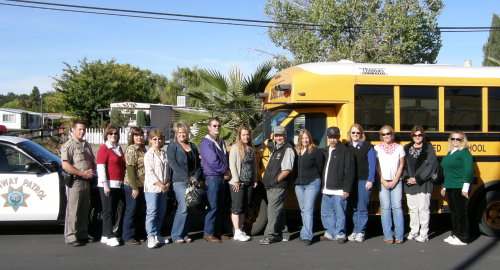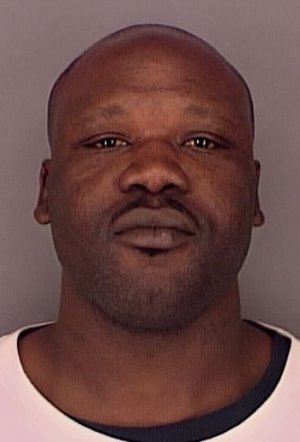- Lake County News Reports
- Posted On
Foodie Freak: Who's eating all those parsnips?

Who eats parsnips? I see them in the grocery store all the time yet I never see anyone buying them.
Parsnips are very popular in England, where they even have gardening contests to compete for the longest parsnip root. Eating parsnips with Christmas dinner is considered essential in many households in Northern Europe. But what are they doing in Lake County grocery stores?
Any historical information about the parsnip must be thought upon as iffy at best. Since the first appearance in texts of ancient Rome and Greece the parsnip as a food was lumped into that same group as the carrot. Back then carrots weren’t orange but white, red or purple, and so the similar-looking parsnip was considered to be in the same category.
The “root” of parsnips history (pun intended) is clouded at best. The word for carrots and parsnips in Latin was pastinaca, which eventually became the French word for parsnip, panais. Since it was a root vegetable like the turnip, the English added “nip,” resulting in the modern name.
Parsnips originally came from the Mediterranean region, but as the Romans expanded north they took the parsnip with them. The Romans noticed that the parsnip grew larger the further north it was planted and that it becomes sweeter if harvested after a good frost. Many plants, especially root crops, become sweeter after frost because it triggers the plant to store sugars for the cold spell and prepare to survive the winter by sacrificing the top leafy growth which then allows the plant to strengthen the root. Since the parsnip adapted so much better to the European climate than the Mediterranean, many people think of the parsnip as a European native.
In medieval Europe most kinds of sweeteners were a luxury, so the sweetness of parsnips was considered very appealing to most people and the parsnip became a staple on most tables. As sweeteners became more readily available and the potato was introduced to the European table the parsnip’s popularity slowly declined.
Early colonists planted parsnips in North America and over the years some escaped and became wild parsnips. While they are mildly edible they look remarkably like wild hemlock, which Socrates will tell you is not the greatest thing to eat if you have any interest in your heart beating tomorrow. So unless you are an experienced forager, leave the wild parsnips in the wild because you may inadvertently grab a handful of poisonous hemlock.
Someone in the world obviously loves parsnips because their seeds don’t have a very long shelf life. While many types of seeds will survive storage for many years, parsnip seeds are typically viable for only a year, two years at maximum. Therefore, saving parsnip seeds to replenish the planet with nutritious produce after the Apocalypse isn’t recommended. If you wish to grow parsnips in Lake County you should probably do it in a wine barrel full of potting soil. They like loose sandy, loamy, soil, and our native soil of clay mixed with lava rocks and obsidian isn’t particularly parsnip-friendly.
Parsnips taste better if they are under a pound in weight because smaller or younger generally mean sweeter. This is true of many foods, such as parsnips, lobsters, veal, most fishes, Hansel and Gretel, etc. As parsnips get larger they will develop a woody core that is about as much fun to eat as the core of a pineapple. Luckily as the core gets woody it also becomes easier to remove from the rest of the root.
If you want to attempt to grow the world’s record parsnip, you should be aware that those Brits like to play with their beloved parsnips in this field and currently hold both records. You need to top either (yes, there are actually two different ways of doing it) length at 17 feet 1 inch, or weight at 12 pounds, 9 ounces. The record for length isn’t quite as impressive as it sounds, so don’t waste your time trying to imagine the 17-foot record parsnip as a huge Paul Bunyan-sized vegetable that can feed a whole town. The record breaking parsnip looks more like a foot long carrot with the tip ending in a string that continues on another 16 feet.
For your own personal use (not for contests), choose parsnips similarly to how you would choose carrots. They should be firm, evenly creamy white to tan-colored, with no bruising or soft spots.
Parsnips are versatile enough to be used in hundreds of ways: raw, in salads and soups, as appetizers or as a side dish, etc. One of its most common uses is mashed like potatoes or even blended with mashed potatoes. They are low in calories; one whole parsnip is about 130 calories TOTAL. They are high in calcium, fiber, folic acid, iron, potassium, B vitamins (1,2,3,), vitamin C and zinc.
I love parsnips and look forward to them every autumn but I have a hard time imagining that the grocery store carries them all year just for my seasonal jaunt. So the question is ...Who is buying all of these parsnips?
The recipe I’ve included today was originally made with parsnips, rutabagas and winter squash, but not being used to those vegetables the recipe wasn’t well liked in my home. However when changed to parsnips, potatoes, onions and garlic the same recipe was enjoyed much more. So keep in mind that you might not want to put too many new/unique ingredients into one recipe.
The great thing about these root vegetables and autumn/winter squashes is that there is such a variety that you can mix and match this recipe to your own taste. I prefer to cube the ingredients a little smaller than average (about a quarter-inch dice) so that every forkful will have a varied combination of ingredients, not to mention that they cook faster when smaller.
Roasted Autumn Vegetables
2 parsnips diced (remove core if necessary), about two cups
1 baking potato diced, about two cups
1 winter squash (delicata, golden nugget or whatever your favorite is) diced, about two cups
1 onion quartered (leave the root intact to hold each of the four quarters together)
2 tablespoons butter, melted
2 tablespoons olive oil
¼ cup orange juice
3 tablespoons whiskey or bourbon
2 tablespoons butter
Preheat oven to 450 degrees.
Mix the melted butter and olive oil together and in a large bowl. Put the diced parsnips, potatoes, squash, and onion into the butter/oil mixture and toss together until well coated. Spread evenly in a single layer on a cookie sheet and put into the oven.
Meanwhile, mix the orange juice and whiskey in a small sauce pan on high heat and bring to a boil. When the mixture starts to boil reduce heat to a simmer and let cook for a minute or two so it reduces slightly and the heavy alcoholic smell burns off. Turn off the heat and add the butter and gently shake the pot until thoroughly combined.
Check the vegetables in the oven and shake the pan every fifteen minutes until done (about 35 to 45 minutes). When the vegetables are done (some carmelization and browning is desired, pieces should be tender) put in a serving bowl and pour the orange sauce over them. Lightly toss and serve.
Ross A. Christensen is an award-winning gardener and gourmet cook. He is the author of "Sushi A to Z, The Ultimate Guide" and is currently working on a new book. He has been a public speaker for many years and enjoys being involved in the community.
{mos_sb_discuss:2}

 How to resolve AdBlock issue?
How to resolve AdBlock issue? 







